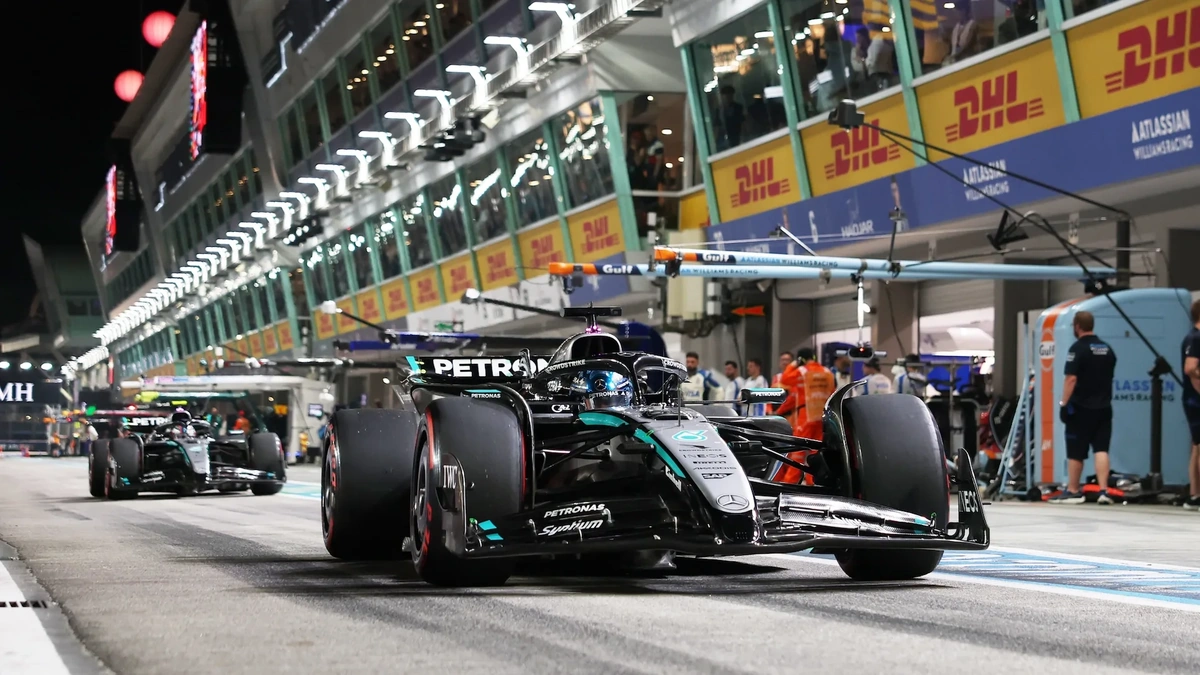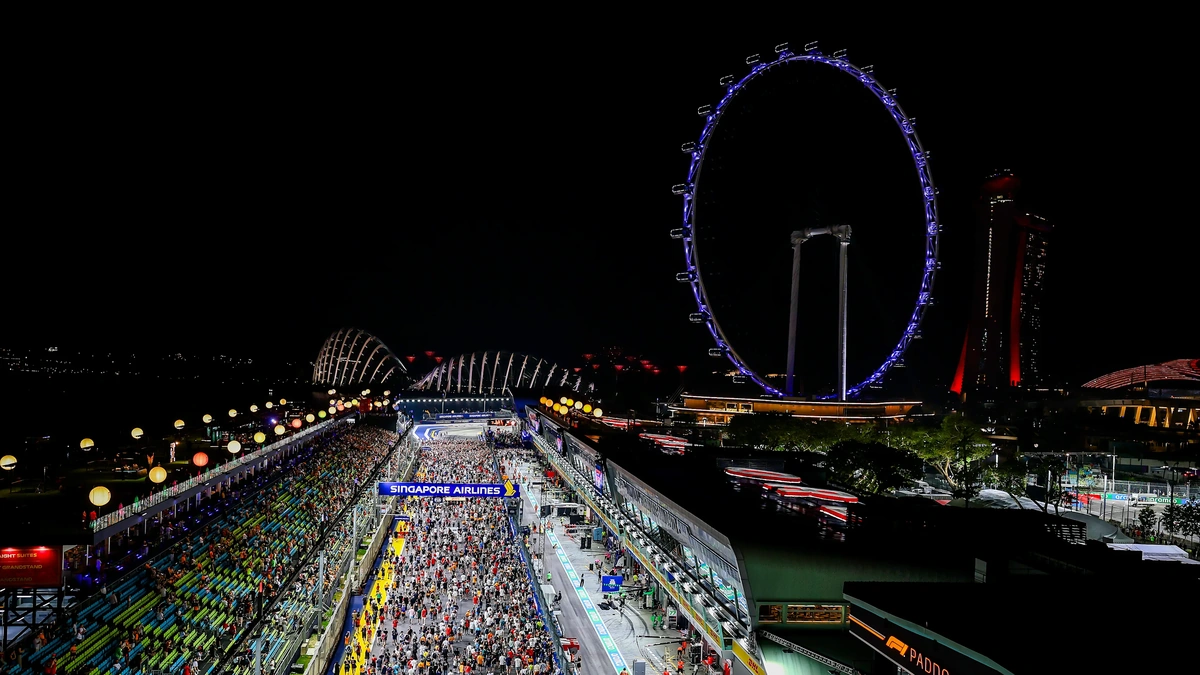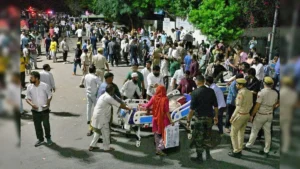Singapore Grand Prix | Beyond the Roar – Decoding the Strategy Behind the Speed
The Singapore Grand Prix. Just hearing it, you can almost smell the burning rubber, feel the nervous energy crackling in the air, and taste that overpriced (but oh-so-necessary) coffee. But let’s be honest, it’s more than just a race; it’s a high-stakes chess match played at 200 mph. And this year? This year promises to be something truly special.
Instead of just rehashing the race results, let’s dive deep into the why . Why does this particular race hold such significance? Why do teams throw everything they have at conquering the Marina Bay Street Circuit? And what can we, as armchair strategists, learn from it all?
Why Singapore is the Ultimate F1 Test

Here’s the thing: the Singapore Grand Prix isn’t just another stop on the Formula 1 calendar. It’s a brutal proving ground. A true test of driver skill, team strategy, and car reliability. Why? Because it throws everything at you. Think of it as the F1 equivalent of an extreme endurance challenge.
First, there’s the heat. Singapore is notoriously humid, turning the cockpit into a pressure cooker. Drivers lose liters of fluid during the race, pushing their physical endurance to the absolute limit. Then there’s the track itself: a narrow, twisty street circuit lined with unforgiving walls. One tiny mistake, one lapse in concentration, and it’s game over. Safety car deployments are almost guaranteed, which can completely upend race strategies.
But what fascinates me is how this unique combination of factors forces teams to make incredibly difficult choices. Do they prioritize qualifying speed, knowing that a good starting position is crucial on a track where overtaking is notoriously difficult? Or do they focus on race pace and reliability, hoping to capitalize on potential safety car periods and driver errors?
The Strategy Behind the Setup | More Than Just Downforce
You see, unlike open tracks with ample space, the Marina Bay Street Circuit demands a unique car setup. Teams typically run maximum downforce to improve grip through the corners. This helps with traction and stability, but it also increases drag, which can hurt top speed on the few straights the track offers.
Fuel management becomes critical. The stop-start nature of the circuit means cars are constantly accelerating and decelerating, burning through fuel at an alarming rate. Teams have to carefully balance performance with fuel economy, which can influence their tire strategy and pit stop timing.
And speaking of tire strategy , that’s where things get really interesting. The abrasive asphalt and high temperatures take a heavy toll on tires, forcing teams to carefully manage their degradation. Choosing the right tire compounds and executing timely pit stops can make or break a race. What I initially thought was just luck, usually boils down to meticulous planning and rapid decision-making on the pit wall.
Singapore’s Impact on the Championship Battle
So, why should you care about all this? Because the Singapore Grand Prix often plays a pivotal role in the F1 world championship battle. Its unique challenges can expose weaknesses in even the most dominant teams, and a bad result here can have a devastating impact on a driver’s title aspirations.
Think about it: a mechanical failure, a strategic blunder, or a driver error in Singapore can easily cost a driver 25 points – a massive swing in a championship that can be decided by a single point. That’s why teams treat this race with such reverence and why fans hold their breath every time a car brushes the wall.
Decoding the Data | What to Watch For This Year
Okay, so we’ve established why the Singapore Grand Prix is so important. But what should you be looking for this year? Well, keep a close eye on the following:
- Team Performance and Car Updates: Scrutinize team performance metrics and pay close attention to any car updates or aerodynamic tweaks introduced specifically for this high-downforce circuit.
- Qualifying Pace and Overtaking Opportunities: Analyze qualifying pace closely, since a strong starting position is crucial on the narrow Marina Bay Street Circuit where overtaking opportunities are limited.
- Safety Car Probability and Strategic Implications: Monitor the likelihood of safety car interventions, given the track’s challenging layout, and understand how these disruptions can impact tire strategies and pit stop timings.
Also, the Marina Bay Street Circuit is undergoing some layout changes this year. It will be interesting to see how this effects lap times and racing strategy. How will drivers and teams adapt? Only time will tell.
Let me rephrase that for clarity: This year, the race will be even more unpredictable due to these course alterations, making strategy and adaptability key!
A common mistake I see people make is underestimating the psychological toll this race takes on the drivers. They’re not just battling each other; they’re battling fatigue, dehydration, and the constant pressure of knowing that one small mistake can have huge consequences. This is where mental fortitude becomes just as important as driving skill. And the driver that keeps their cool wins.
The Future of the Singapore Grand Prix
Looking ahead, the Singapore Grand Prix seems secure on the F1 calendar for the foreseeable future. It’s a fan favorite, a logistical marvel, and a vital testing ground for the sport’s leading technologies. As Formula 1 continues to evolve, expect the Singapore Grand Prix to remain at the forefront, pushing the boundaries of what’s possible on a street circuit. But, the new layout may have interesting ramifications.
In conclusion, the Singapore Grand Prix is far more than just a spectacle; it’s a microcosm of everything that makes Formula 1 so compelling. It’s a race where strategy, skill, and sheer determination collide under the bright lights of Marina Bay, and where the smallest details can have the biggest impact. So, the next time you watch the race, remember that you’re not just watching cars go around in circles; you’re watching a complex, high-stakes game unfold, where every decision matters.
FAQ About the Singapore Grand Prix
What makes the Singapore Grand Prix so unique?
The Singapore Grand Prix is unique because it’s a night race on a street circuit, known for its high humidity and challenging layout, making it physically and mentally demanding for drivers.
Why is tire strategy so important in Singapore?
The abrasive track surface and high temperatures cause significant tire degradation, making tire management and strategic pit stops crucial for success.
How do safety cars affect the race strategy?
Safety car periods are common due to the narrow track and can bunch up the field, potentially benefiting or hindering different teams based on their pit stop timing.
What impact does the Singapore Grand Prix have on the championship?
Given its unique challenges and high probability of unexpected events, the Singapore Grand Prix can significantly impact the championship standings, often exposing weaknesses in leading teams.
What are the key strategic considerations for teams during the Singapore Grand Prix?
Teams must balance downforce levels, fuel management, tire degradation, and pit stop timing while accounting for the high likelihood of safety car interventions to optimize their race strategy.
How does the new track layout affect the race?
The new track layout might reduce lap times and it will be important to see how it affects racing strategy.













